A bit of bonhomie
Friendship and camaraderie rule in a competitive fleet of the first one-designs in which a gathering on the green requires sailing up an overgrown bay
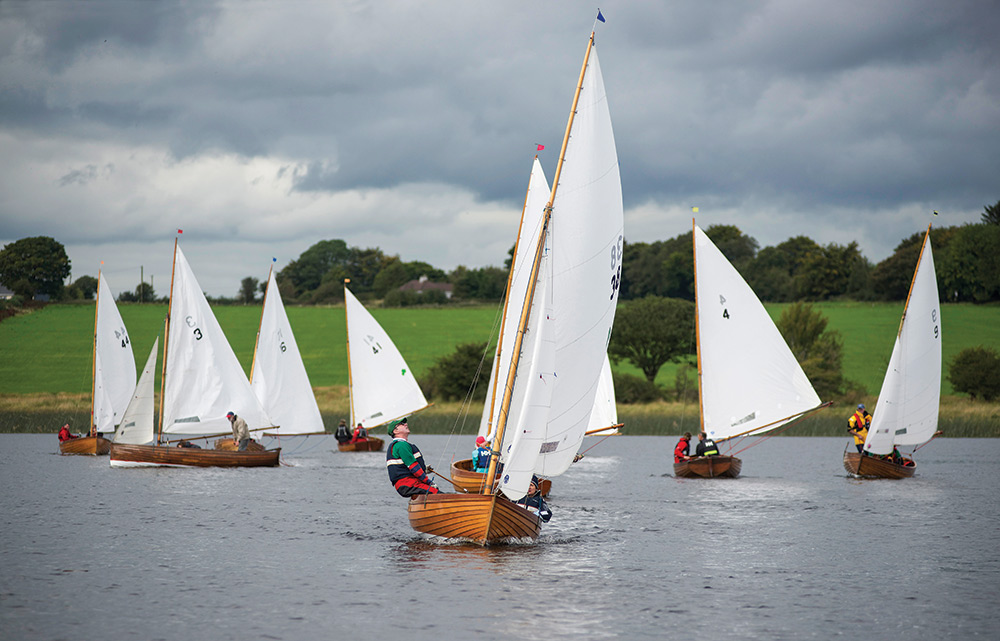
Have you ever used a scythe, Nic?” asked Cathy Mac Aleavey when I met her at Jimmy Furey’s house on the banks of the River Shannon in Ireland last summer. Now, I’ve been to dozens of sailing events around the world, and I’m pretty sure I’ve never been asked that question before.
“A long time ago,” I replied. “Or it might have been a sickle.”
“Good,” she said. “Come with me.”
And so she led me down Jimmy’s garden and across a field, and pointed to a seemingly impenetrable bank of rushes in front of us.
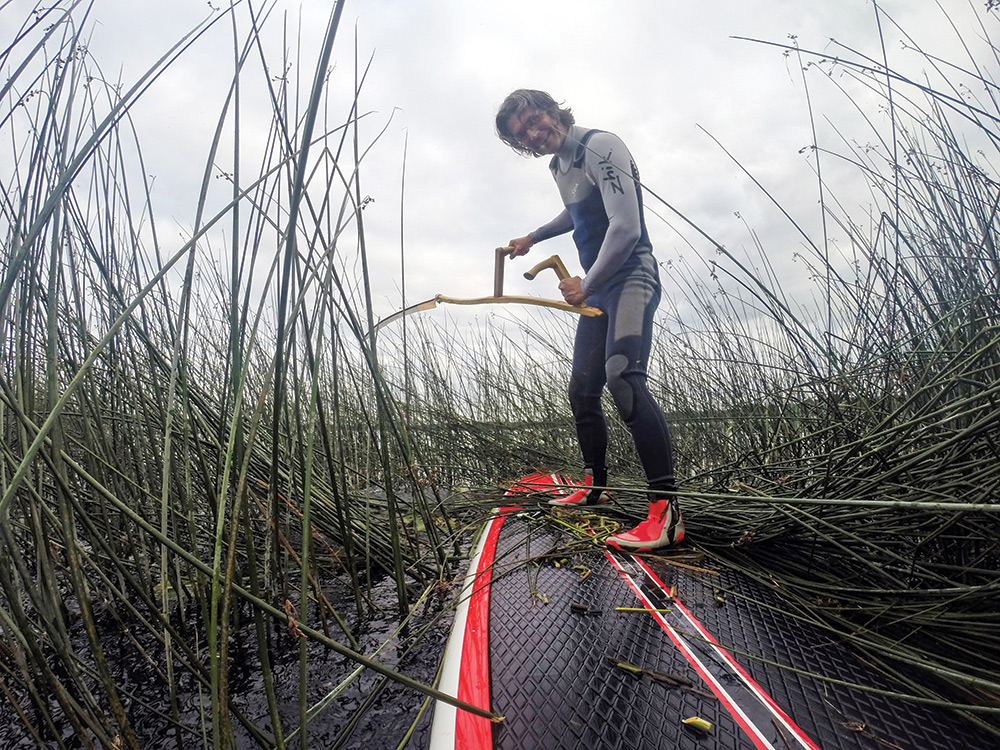
“We need to cut a channel through that, so Jimmy can see the boats,” she said. “If Moses can’t go to the mountain, the mountain will have to come to him.” With those words, she climbed on a paddleboard and started attacking the rushes with a scythe, taking long, determined sweeps below the surface of the water. Once I realized she wasn’t joking, I joined her, taking my turn with the scythe, and soon Cathy’s husband Con Murphy joined in with a sickle too. Six hours later, as dusk was falling, we finally broke through to the other side and emerged onto the dark, glassy waters of Blackbrink Bay. It felt every bit as satisfying as if we’d cut a path through the jungle and reached the Pacific.
The 2015 Galey Bay Regatta was organized by Cathy to mark the launch of her new Water Wag, Mariposa, which she built with master boatbuilder Jimmy Furey, and to celebrate the 100th birthdays of two other Wags, Barbara and Mary Kate. When it became clear that Mariposa wasn’t going to be ready in time, Cathy decided to have a boat blessing instead, but two problems presented themselves: how to get everyone to Jimmy’s workshop to see the new boat, and how to get 89-year-old Jimmy to the water to see the fleet gathered partly in his honor. The solution, she decided, was to part the waters (rushes) and bring the mountain (Wags) to Moses (Jimmy).
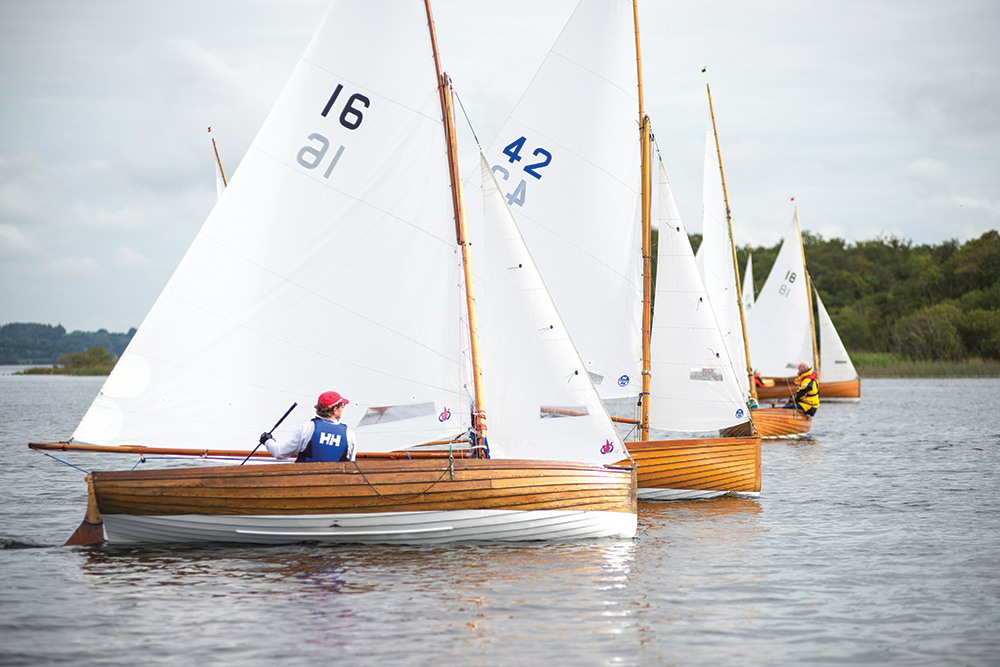
Biblical references don’t seem out of place when talking about a class as old as the Water Wags. It was 1886 when Dublin lawyer Thomas Middleton had the revolutionary idea of building a fleet of identical boats to race together on Dublin Bay. He acknowledged the double-ended dinghy he proposed might not be the fastest on the bay but, he wrote, “Speed is only found by comparison, and as all the boats will be the same a true and most exciting race will ensue, a race where every boat will have the same chance, a race that will be a contest of the crew and not one of designers and sailmakers.” And in one stroke the concept of one-design racing was born and the future of yacht racing transformed forever.
Nearly 130 years later, the Water Wags still race on Dublin Bay every Wednesday night (albeit with the “new” transom-sterned design introduced in 1899). In a concerted effort to revive the class for its anniversary in 1987, many old boats were restored, several new boats were built and the class has gone from strong to even stronger. A dozen new boats have been built since then, and last year’s top event, the Captain’s Prize Race, was raced by 28 boats, the biggest gathering of Wags ever.
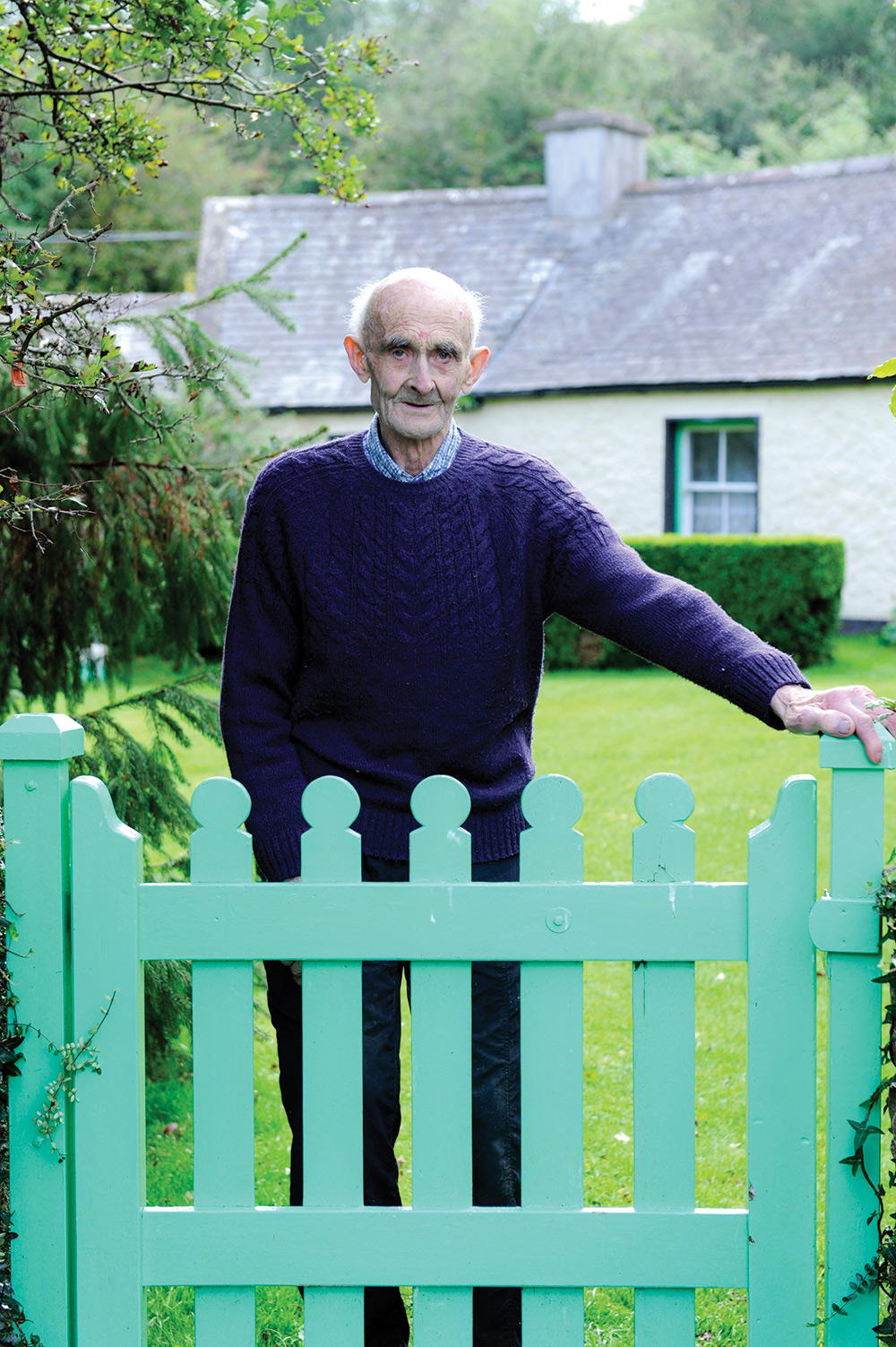
Cathy’s husband Con Murphy explained the enduring appeal of the Wags by comparing them to one of his favorite modern dinghies.
“With Lasers you have to hike, so you have to have hiking muscles, whereas with a Wag you need more all-around fitness,” Murphy said. “A Laser SB3 is faster, and downwind it’s wild, but at the end of the day speed doesn’t matter, because speed is relative. I get as much pleasure winning a Wag race as an SB3 race, and it’s hard to win a Wag race. Wags are more social too, and there are more ladies in the fleet!“
One of the main differences with Wags is that you try to tack as little as possible because you lose two boatlengths with each tack, even if you roll tack, whereas with Lasers you can tack as often as you like without losing too much. That forces you to think ahead and only tack when you really need to. The kids find it difficult to do well in the Wags, because they’re too impatient.”
Back on the Shannon, 13 boats turned up for the first day of racing on Blackbrink Bay, squeezing in three races around a classic windward-leeward course. The Wags have been coming to the Shannon since 1903, when nine boats were taken by rail and then carried by donkey cart to race on Lough Boderg, to the north. Indeed, since the earliest days of the class, many Wag owners have also owned Shannon One Designs and have enjoyed racing Wags in Dublin on Wednesdays and SODs on the Shannon on weekends.
There was a feeling of friendly bonhomie, as the crews chatted and helped launch the boats from the slipway at nearby Lecarrow. Mary Kate had just returned from being restored by Dougal McMahon, who is rapidly emerging as the main boatbuilder for the class. Her owner William Prentice had deliberately asked Dougal not to stain the new planks to the same color as the old as he felt that was cheating, so there was some banter about the boat’s new “go-fast” striped topsides.
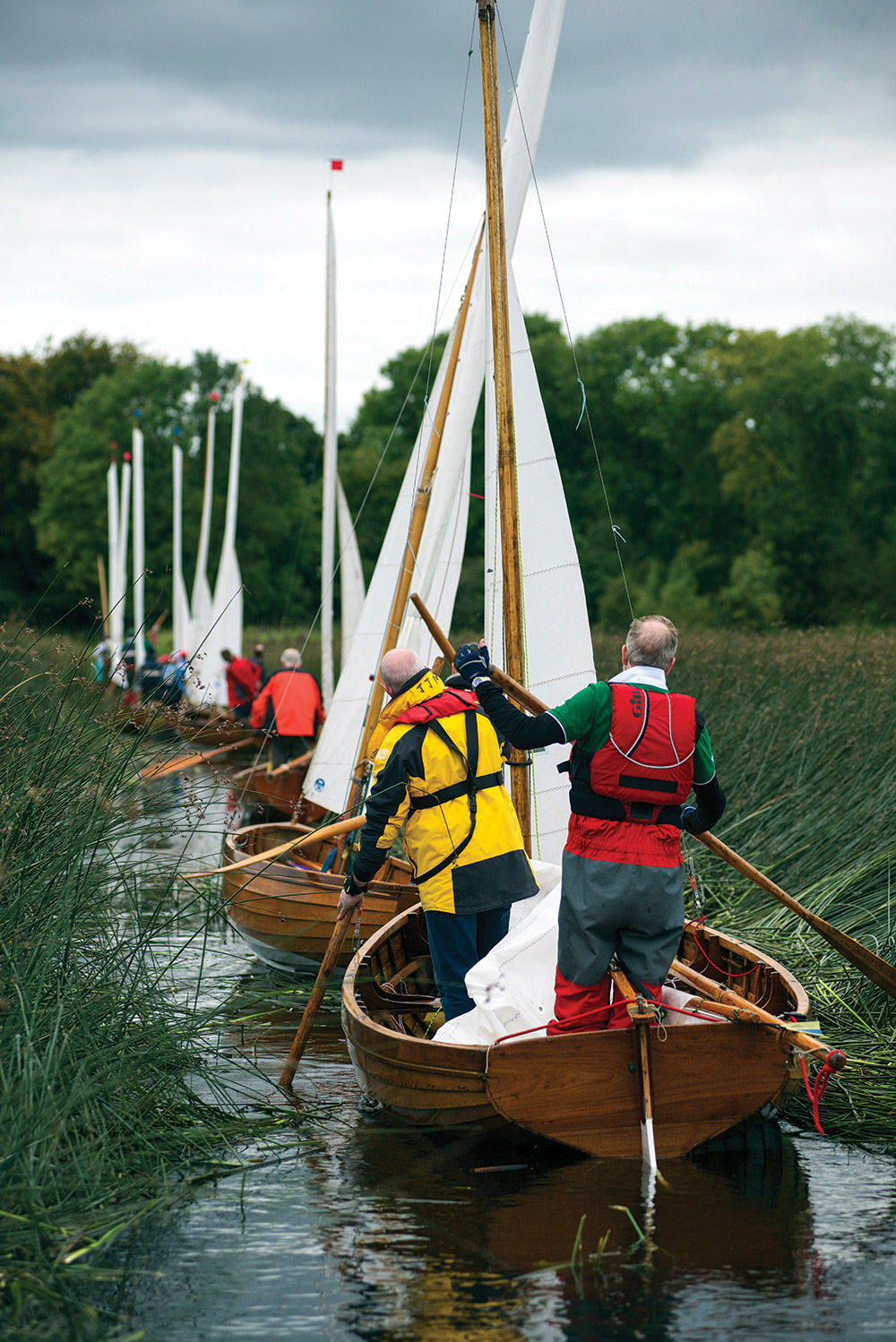
That didn’t stop most of the fleet from bunching up at the start of every race, anxious to be the first over the line and prompting at least one general recall. It’s a measure of how well these crews know each other that the first two races that day were won by the same two boats that had been vying for top place for most of the year: Cathy and Con on Mollie and Guy and Jackie Kilroy on Swift, both boats built after 2000. The surprise of the day came in the third race when Harry Croxon and Killian Skay won on the 80-year-old Maureen, which is usually to be found toward the bottom of the fleet. But then the older Wags have a habit of pulling surprises, and half the boats in last year’s top 10 were built before 1940.
With the racing done, the boats followed Cathy and, one by one, sailed into the channel and through the rushes to Jimmy’s field. It was a bizarre sight, all these boats sailing determinedly into the tall grasses, leaving just the top of their sails peering over, and it’s another measure of the class’s team spirit that everyone went along with Cathy’s madcap idea. Having moored the boats in the cut, the crews got a lift back to Lecarrow on the committee boat before returning by car to admire Mariposa and eat the birthday cakes. But, beautiful as Mariposa was and delicious as the cakes were, there was no doubt the main attraction was Jimmy’s idyllic cottage—the very essence of a traditional Irish cottage, set in equally quintessential Irish countryside—and the star of the show was the elderly man sitting quietly to one side, watching everything with a happy twinkle in his eye.
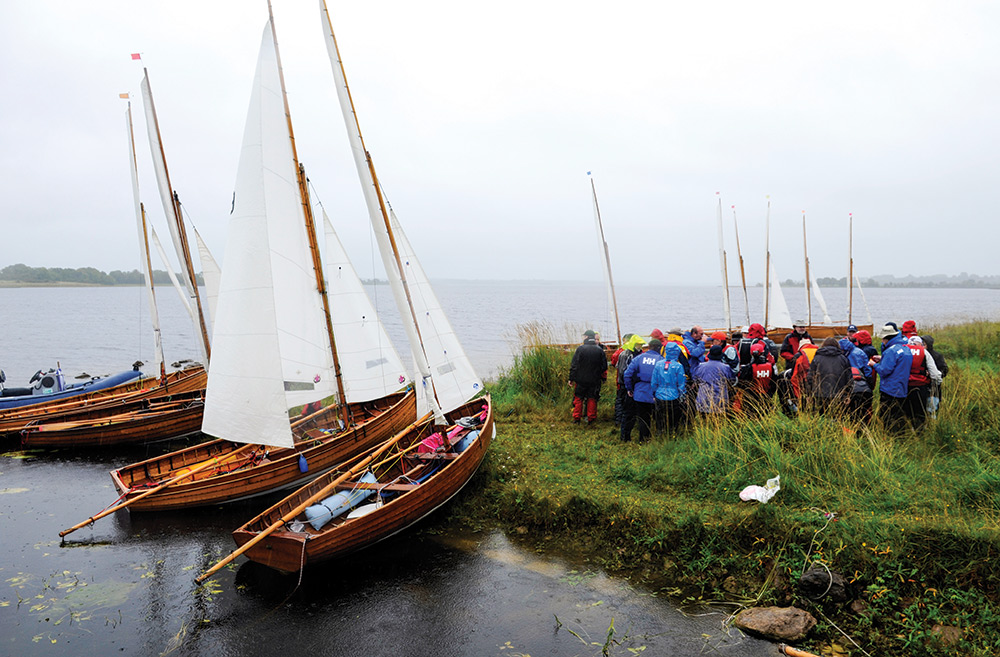
“Have you ever sailed a Wag, Nic?” asked Class Captain David Macfarlane the next day, as we headed back to Blackbrink Bay to release the boats from their overnight berth in the rushes.
“A long time ago,” I replied. “Or it might have been a 12.”
“Good,” he said. “Come with me.”
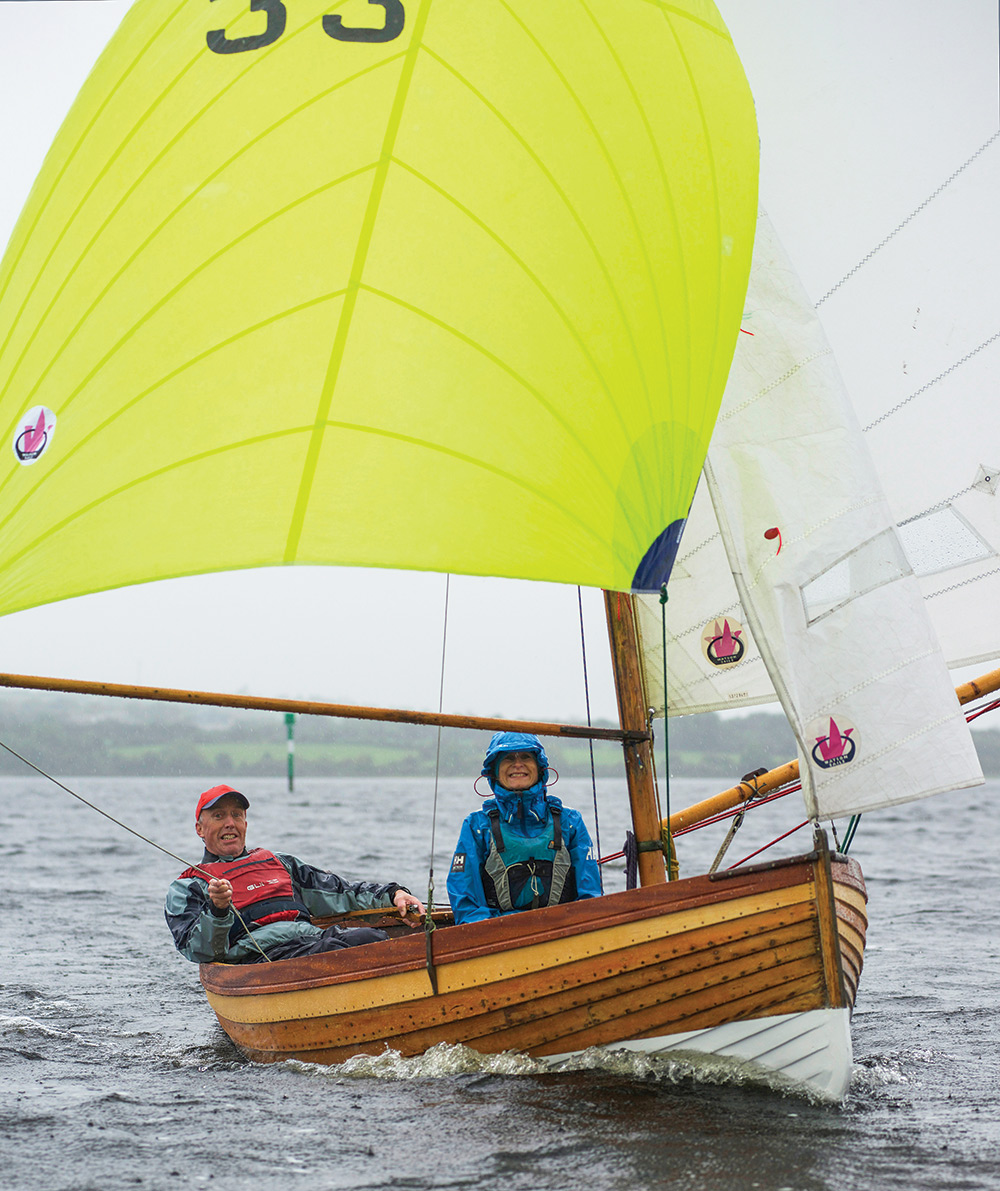
And so it was that, having not helmed competitively for at least 10 years, I found myself clutching the tiller of the wonderful Moosmie, while David hoisted the sails. Built in 1910, Moosmie (Japanese for “young woman”) is one of seven centenarians in the Dublin Bay fleet and despite still being largely original, she’s highly competitive. All her sailing gear is unashamedly modern, with color-coded halyards and sheets, stainless steel blocks and a well-cut suit of sails. Most importantly, David knows exactly what he’s doing, winning the Jubilee Cup, the Wags’ main trophy, in 2006 and 2010 and finishing in fifth place overall in 2015.
Not that it’s just about winning prizes, as David is quick to point out, “We are focused not just on the people in front but the people at the back too, because the guys at the front will enjoy themselves anyway because they are winning races. We need to look after the ones at the back.”
It’s a crowded start as usual, but I manage not to ram anyone and we find some clean air at the windward end of the line. With their short waterlines and rockered keels, Wags are nimble boats and, provided you keep your speed up, can turn reasonably quickly. Lose momentum, though, and they will quickly stall and become glued to the water (all that wetted surface area). The guiding principle is to tack as little as possible, so a short starboard tack is followed by a long port tack before we head for the first mark. I leave the tactics to David and concentrate on helming the boat.
The fleet is spread out across the bay, and it’s only after we round the first mark that I realize we are in front, closely followed by the class champions, Mollie and Swift. As we crack open the spinnaker for the downwind leg, David says, “First around the mark. Well done!” But of course it doesn’t last, and we soon lose our advantage, as I struggle to keep the spinnaker full and maintain the boat’s momentum. It happens on both laps of the race, gaining on the upwind legs and losing on the downwind ones; I obviously need more spinnaker practice. We finish in fifth place, not too shabby in a fleet of 13 boats, but of course I was on one of the best boats in the fleet and accompanied by an extremely able class captain.
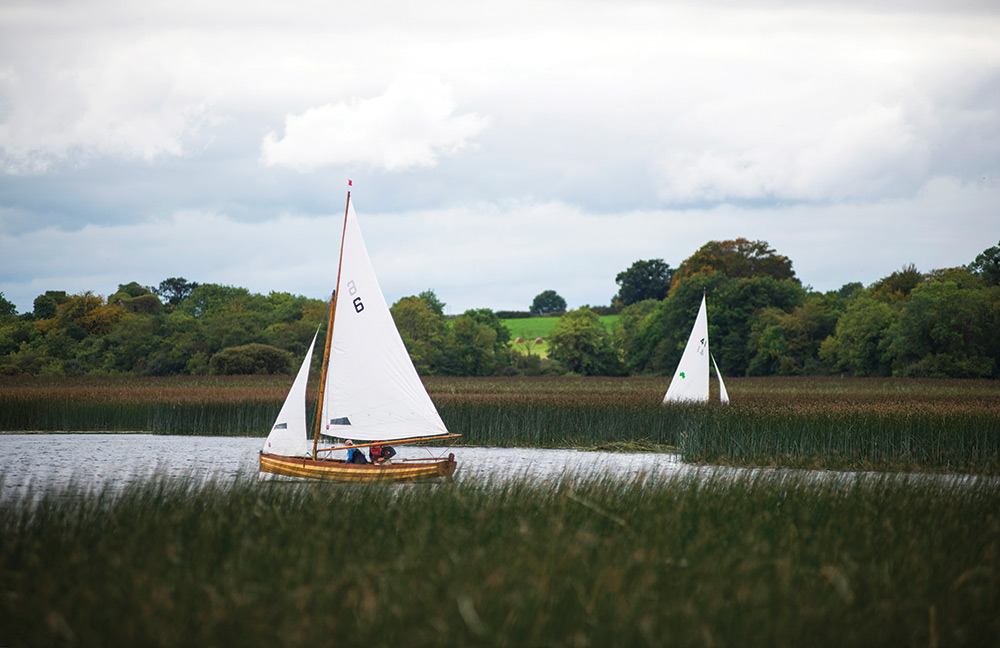
I return to my rightful place in the camera boat for the passage race to Galey Bay, and the regatta turns into a mini-raid as the fleet sails up the Shannon, through steady Irish rain, and moors up under the remains of Galey Bay Castle for lunch. The last time the Wags visited this place, according to class historian Vincent Delany, was in 1926, when at least two of the boats present today (his own Pansy and Ian Malcolm’s Barbara) competed. It’s a powerful reminder of the longevity of these boats, which will almost certainly outlive most of their owners.
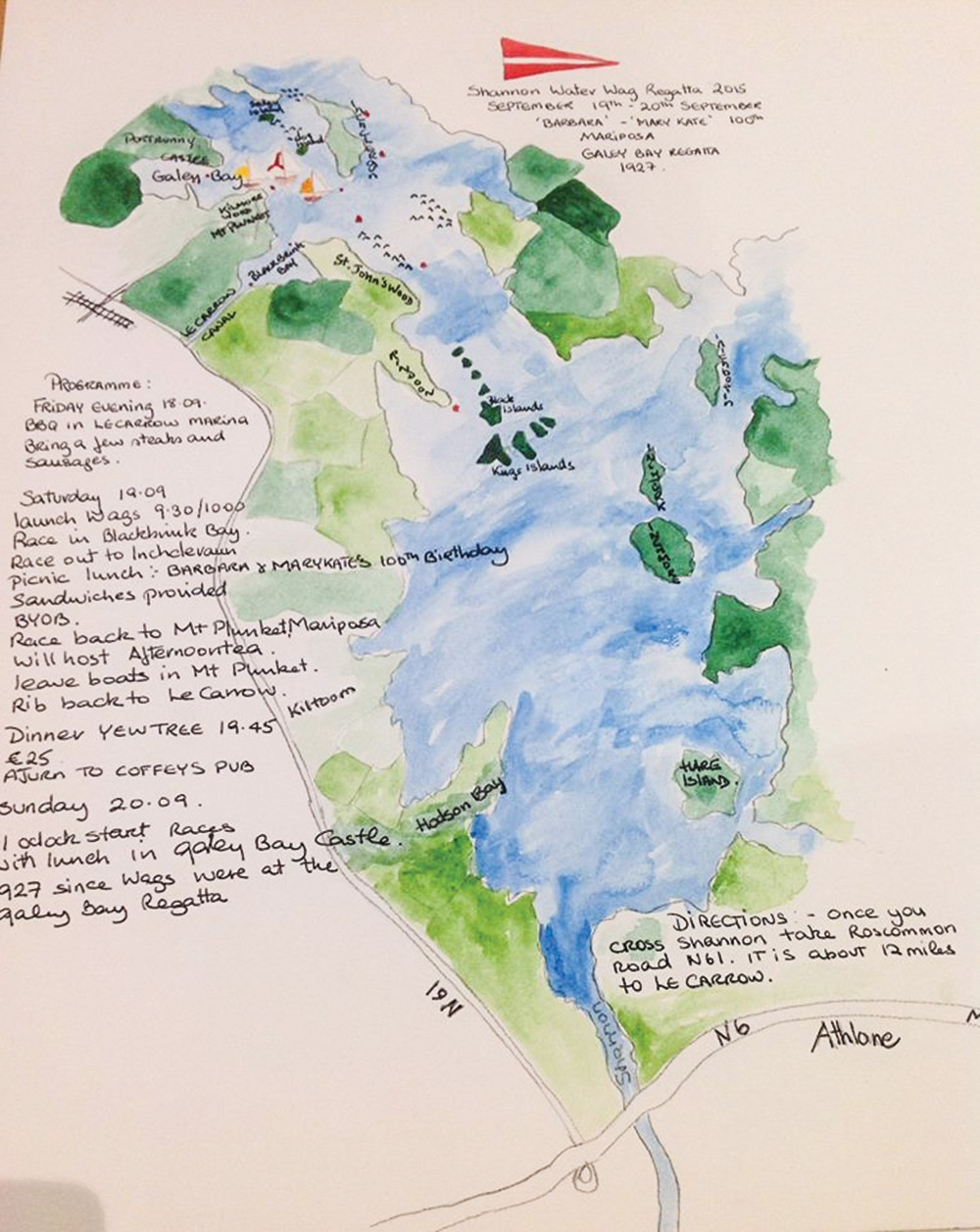
I’m back on Moosmie for the return leg, only this time as crew for maritime historian Hal Sisk, who is at the helm. Hal’s own boat Good Hope has been underperforming, so he’s swapped with David to see if it’s the man or the boat that’s the problem. After a bad start, Hal does a brilliant job of catching up, and we work our way steadily up the fleet, this time with the rain in our faces. By the time we get back to Blackbrink Bay we are in fourth place but, as we tack to the finish line, Mollie charges towards us on starboard tack. At the last second, Hal concedes right of way and we finish in fifth place. But the main thing is that we’re well ahead of Good Hope, in last place, and Hal’s doubts about the boat seem to be vindicated.
In the spirit of the original Wags, who liked to drink to “the Queen’s health” at any opportunity, the prizegiving ceremony took place not in some posh yacht club but in Coffey’s pub in nearby Lecarrow, or to be precise, in the adjoining shop, as Dublin was playing Kerry on television, and no one interrupts a match of Gaelic football. Six hand-painted ceramic paintings of Galey Bay (specially made by Cathy) were duly presented, between the Heinz baked beans and the HB ice cream, with Swift winning overall. It was an occasion Middleton himself would have been proud of.
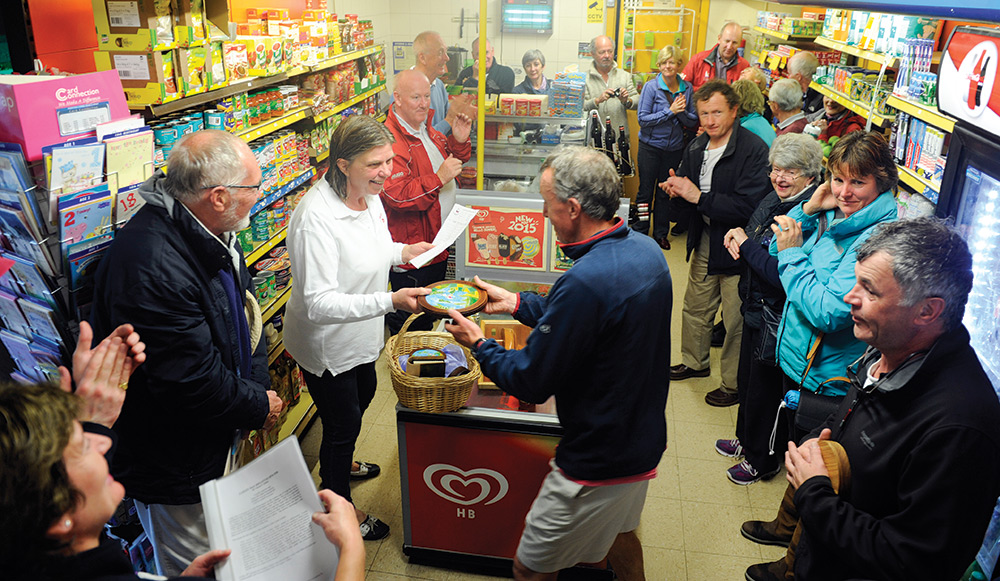

Comments